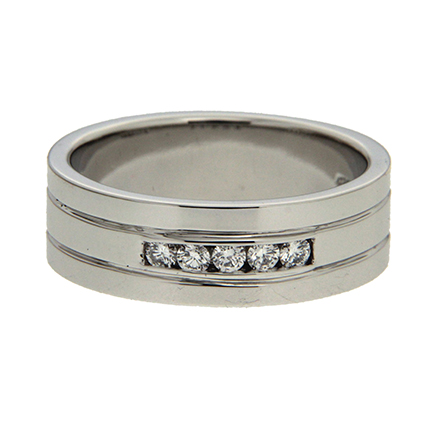The Other Part of a Ring’s Beauty

Precious metals are materials known for their rarity. As a whole, they have strong luster along with resistance to oxidation and corrosion. Many types have mechanical properties which allow for fine detail work. Precious metals most commonly used in jewelry are silver, gold and platinum. The latter two are popular choices for engagement rings and wedding bands.
Platinum is quite ductile, allowing it to be stretched to the thinnest strands. Gold is the most malleable of all metals. When rolled or otherwise compressed, it stretches rather than breaks. A single gram of gold can be hammered into a square meter. Platinum and gold wedding bands can take on many forms, from geometric shapes, crisscrossed bands, arches, ribs and other forms.
In their pure states, precious metals are soft. To make them durable enough to wear as rings, they’re blended with other materials. Platinum may be mixed with copper, palladium or other metals, depending on the mechanical properties the jeweler wants. Depending on the recipe, gold changes color. White gold engagement rings are popular for their neutral color which coordinates with diamonds.
Popular decorations on wedding bands include playing with the rings’ edges. These can be round, beveled, step cut and more. Grooves or straight edged cuts along the length of the ring are also common. Some designs take on a whimsical note, like yellow gold leaves or a pave snake twining around the finger.
Precious metal can take on strong sheens. Depending on the design, someone may want a band that shines as strong as a diamond. Subtler effects like a band resembling woodgrain may do better with a subdued polish. See what design you like best, luster, decorations and all.





